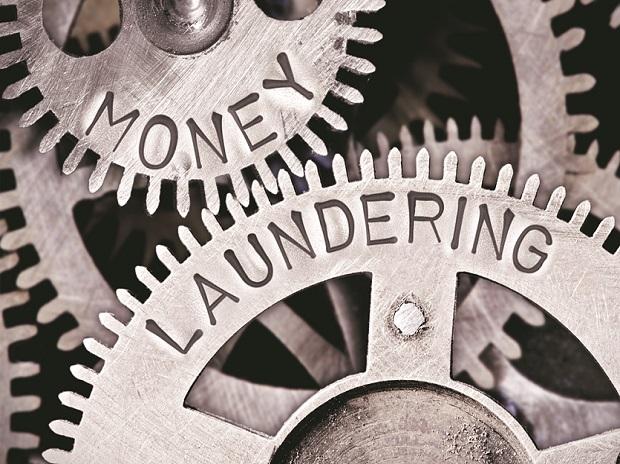)
File photo | Businessman Raj Kundra, husband of actor Shilpa Shetty, outside the Enforcement Directorate office during investigation in a money laundering case, in Mumbai. Photo: PTI
The Enforcement Directorate, a financial investigation agency in India, has attached assets belonging to Shilpa Shetty’s husband Raj Kundra worth Rs 98 crore (approximately $12.25 million). The attached assets include a flat in Juhu, a posh area in Mumbai, a bungalow located in Pune, and various equity shares. This action is part of a larger investigation into money laundering allegedly linked to a Bitcoin Ponzi scheme.
What is a ponzi scheme?
A Ponzi scheme is a fraudulent investment operation that pays returns to investors using funds collected from new investors. It’s essentially a pyramid scheme focused on cryptocurrency in this case. These schemes often attract investors with the promise of high returns at unusual speed compared to traditional investments.
Money laundering involves the process of concealing the source of illegally obtained money by moving it through various financial transactions to make it appear legitimate.
Implications for Raj Kundra:
The attachment of assets by the ED does not necessarily imply guilt. However, it indicates that Kundra is being investigated for his potential involvement in the Bitcoin Ponzi scheme and related money laundering activities. The attached assets will be held by the ED until the investigation is completed or a court order is issued.
What is the Bitcoin Ponzi case?
Back in 2017, when Bitcoin was attracting thousands of investors on the promise of massive gains, Amit Bhardwaj, Ajay Bhardwaj, and Mahender Bhardwaj started the Gain Bitcoin Ponzi scheme through a company called Variable Tech Pte Ltd. The Ponzi scheme allegedly swindled Rs 6,600 crore from investors by promising high returns through Bitcoin mining. The scheme promised monthly returns of 10% on Bitcoin investments but failed to sustain this after an initial period.
Explained in detail:
The scam, known as “Gain Bitcoin,” was launched in 2017, a period when Bitcoin prices were soaring, attracting many investors. The promoters, including Amit Bhardwaj, lured investors with the promise of high returns (around 10% per month) on their Bitcoin investments.
This is a classic sign of a Ponzi scheme, where early investors are paid out using money from new investors, creating an illusion of profitability.
The scheme was unsustainable, and eventually, when they couldn’t get enough new investors, the payouts stopped.
The scheme came to light following investor complaints, leading to multiple FIRs being registered by Maharashtra and Delhi Police between 2018 and 2019.
The ED subsequently initiated a formal investigation under the Prevention of Money Laundering Act (PMLA), leading to the arrests of several individuals involved, including Amit Bhardwaj and members of his family, who are now in judicial custody.
Raj Kundra’s alleged involvement
The Enforcement Directorate (ED) is probing Raj Kundra’s connection to the scam.
According to the ED, Kundra allegedly received 285 Bitcoins from the mastermind, Amit Bhardwaj, for setting up a Bitcoin mining farm in Ukraine. Kundra is not accused of being the mastermind. However, the ED alleges that the deal for the mining farm never materialised, and Kundra is still in possession of the 285 Bitcoins, currently valued at over Rs 150 crore.
Impact of the scam
The scam involved a massive loss of investor funds, estimated to be around Rs 6,600 crore (approximately $825 million) at the time.
This highlights the risks associated with unregulated cryptocurrency investments.
Lifecycle of Ponzi schemes
Initially, these schemes may operate as legitimate businesses. However, they may turn to fraudulent practices when they fail to meet operational income requirements. This situation might arise in scenarios such as a hedge fund facing unexpected losses and thus, unable to deliver promised returns legitimately. To mask these failures, operators might resort to falsifying earnings reports.
To build trust, operators often provide initial payouts that are relatively attractive, encouraging investors to reinvest their earnings or attract new participants. This early success prompts a cycle where the influx of new investors’ funds is used to pay returns to earlier ones.
Sustaining the illusion
Investors who see initial returns might choose to reinvest their money, rarely withdrawing the full amount. Operators encourage this behaviour by showing inflated account balances, thus perpetuating the illusion of a successful investment strategy. Some schemes also allow early investors to withdraw their money completely, which reinforces trust among the community.
Collapse of Ponzi schemes
Ponzi schemes can collapse under several circumstances:
1. The promoter might disappear with the investment funds, leaving no returns for the investors.
2. If new investments cease, the scheme faces a liquidity crisis, unable to fulfil return promises, leading to panic among investors.
3. External market conditions or mass withdrawal requests can expose the insufficiency of funds, prompting a rapid collapse of the scheme.
First Published: Apr 22 2024 | 3:45 PM IST
Note:- (Not all news on the site expresses the point of view of the site, but we transmit this news automatically and translate it through programmatic technology on the site and not from a human editor. The content is auto-generated from a syndicated feed.))



